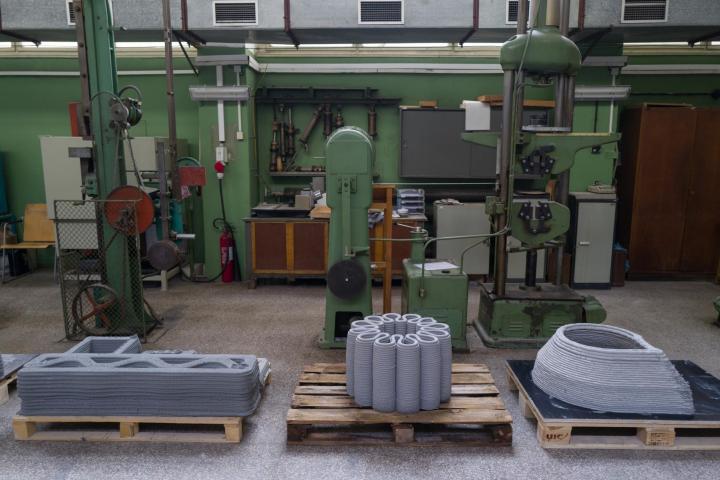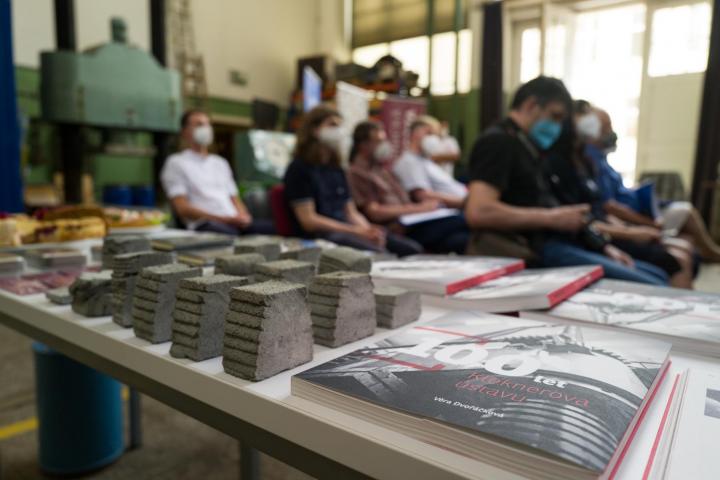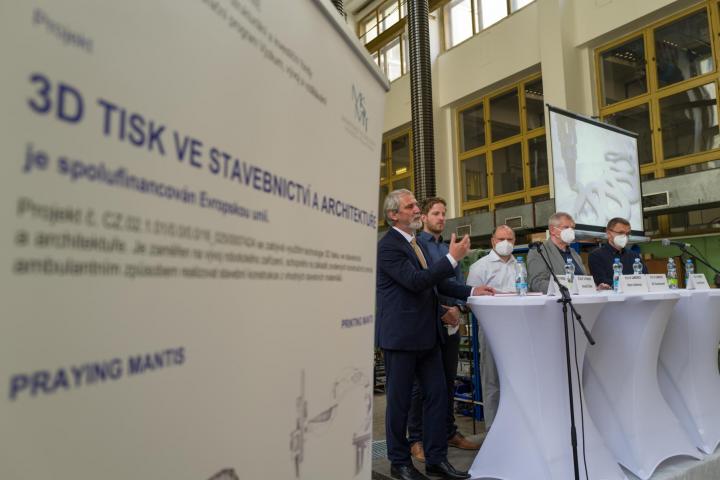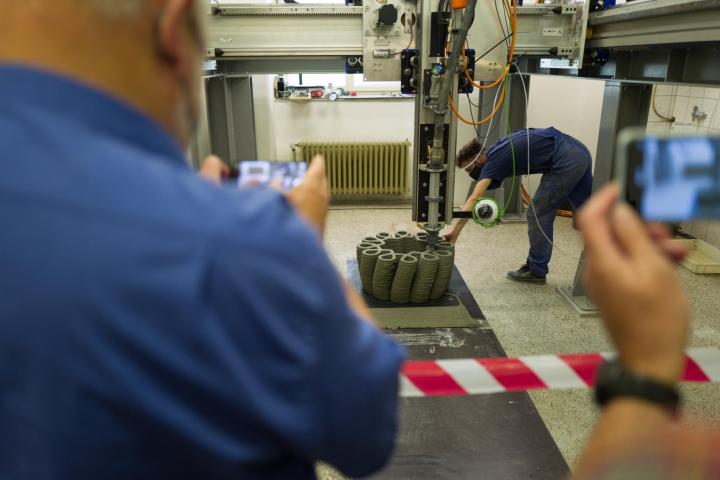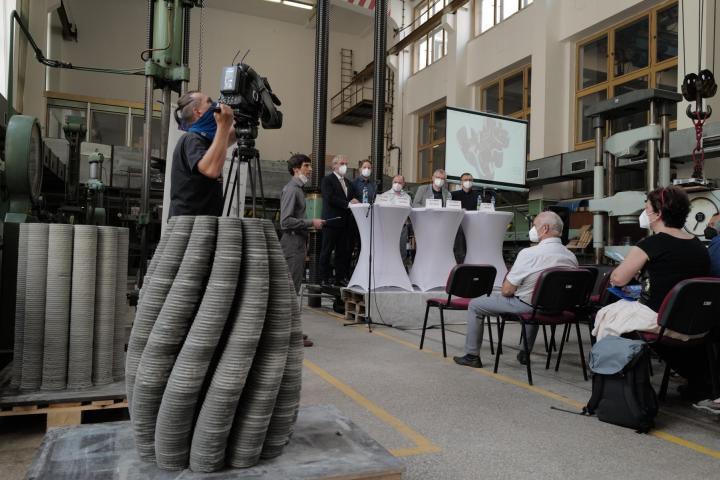
The Technical University of Liberec (TUL) is the guarantor of the 3D STAR project, which aims to develop a robotic arm that can be easily transported to the construction site and print several-storey buildings on site. "We are designing a mobile robotic device, Printing Mantis, which moves around the construction site and gradually manages to print both vertical and horizontal structures," says Jiří Suchomel from the Faculty of Arts and Architecture of TUL, the spiritual father of the 3D STAR project, for which the university received a subsidy from the OP VVV.
A test device with a mobile printhead has already been developed at TUL, and another part of the team has developed a model of a robotic arm that can copy any curve and will carry the printhead in the future. The TUL interfaculty team joined forces with the Prague CTU, specifically the Klokner Institute, whose staff are specialists in materials engineering and are targeting concrete and cement mixtures in this project. The entire testbed was transported to KÚ, assembled and put into operation. "Our task was to develop and further optimize the cement mixtures for this particular printing device so as to eliminate further human intervention from the printing process in the future. The ingredients need to be selected correctly, mixed, the cement composite needs to maintain an optimal consistency during printing and the appropriate printing speed needs to be set depending on the actual requirements for the specific printed structure," says David Čítek, head of the Concrete Laboratory at the Department of Experimental and Measurement Methods at the Klokner Institute of the Czech Technical University in Prague, adding: "We already have experience with 3D printing and have a very decent material and technical base. We know from examples from around the world that a suitable cement composite exists, and now it was our task to develop and apply this material." The development of the compound took about 2 years in stages. He estimates that it will still take several months to fine-tune the optimum mix.
The first experiments have already been successfully completed, and Testbed now prints from cement composite with a grain size of up to 1 mm with the addition of a plasticizer and other modifying additives. "In the printhead, some applications require the addition of solidification accelerators to the mixture, ensuring instant stability when printing more complex elements," says David Čítek of the Klokner Institute at CTU. In addition to the composite itself, experts from the Klokner Institute test the printed samples in terms of maximum loads, material parameters and durability. The entire mixing and printing system can continuously print a concrete object with a plan size of 3 x 1.5 metres and a height of up to about 1 metre.
"Together with our colleagues from the Klokner Institute, we are also trying to design concretes with the addition of metal or polypropylene fibres as dispersed reinforcement to improve the mechanical properties of the mix," says Vladislav Bureš from the Department of load-bearing structures at the Faculty of Arts and Architecture at TUL.
The 3D Star project was launched in 2018 and ends in 2022 and its provider is the Ministry of Education. Within the framework of the pre-application research call, for which TUL has received a subsidy of over CZK 72.5 million, scientists are to verify the main principles of operation of the robotic arm and its components and to create functional models of the robot parts, in this case the print head, and to acquire and verify samples of printed structures.
"Additional funds will be needed to complete the actual printing facility for the buildings. We expect a follow-up to the Enterprise and Innovation for Competitiveness operational programme for funding. To continue the well-started development, it is necessary to find an economically strong industrial partner who sees the future in this technology," concludes Petr Zelený from the Faculty of Mechanical Engineering of TUL, the main guarantor of the project.
More information about the project at http://3dstar.tul.cz/
